

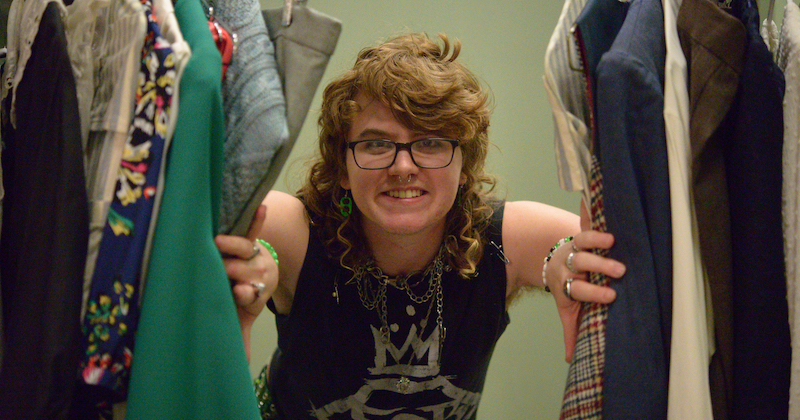
Sewing up a career path
Photos by Bear Figueroa and Evan Krape and courtesy of Alex Culley October 29, 2025
UD intern-to-apprentice program provides students with theatre production skills and professional experience
When Alex Culley was just 3 years old, his teacher sent a note home telling his parents he was exceptionally good at using scissors. By age 5, he had picked up a needle and was trying to sew things by hand.
“I had these kits where you could make two stuffed animals, a person-sized version and a doll-sized version. I made a lot of those throughout the years,” he said.
Those first attempts to stitch together a stuffed animal sparked an interest in sewing that brought Culley to study fashion and innovation in the College of Arts and Sciences at the University of Delaware. And thanks to a competitive intern-to-apprentice program offered by the Department of Theatre and Dance, he’s currently using his fashion knowledge and sewing skills to fulfill a dream — working as a paid stitcher in the costume department of Resident Ensemble Players (REP), UD’s professional theatre company.
The program begins when students register for THEA408: Theatre Practicum. The hands-on course provides students with practical experience across various aspects of theatre, including performance, costumes, lighting, scenery, props, stage management and arts administration. The most successful students are offered apprenticeships — the opportunity to get paid professional experience in the skills they’ve just learned.
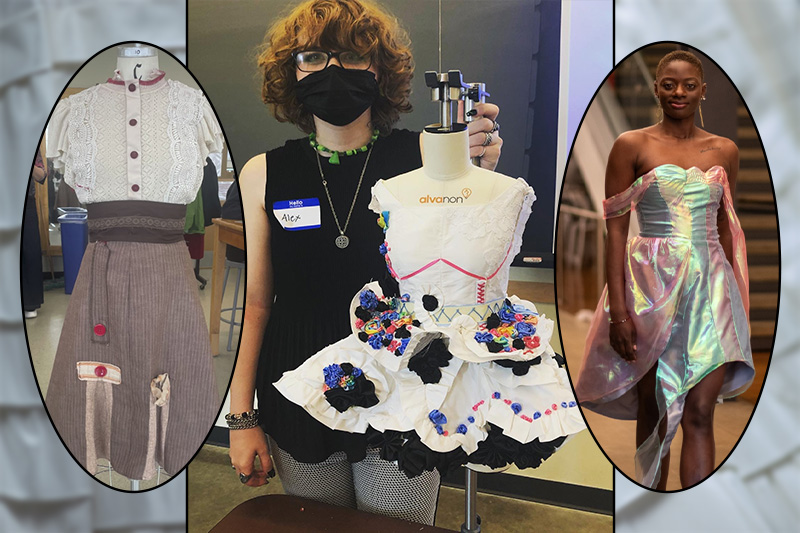
Practicum alumni have found success working on Broadway productions, opening their own companies or even returning to positions at UD, like REP technical director Elliot Queale.
Culley, who graduated in May 2025 with an honors degree in fashion and apparel studies, is on track to follow in their footsteps.
As a stitcher, Culley assembles costume pieces after they’ve been cut out of the fabric, either with a machine or by hand. He also alters pieces to fit the actors.
“If you pay attention, so much storytelling happens through costume design,” he said. “In the movie Wicked, the school uniforms are striped, and the stripes line up perfectly, showing how the school is separated into good and evil. But Elphaba’s stripes don’t line up, which reveals that her relationship to the school is more complicated.”
The first years
Working in costume design has been a long-standing dream, but coming out of high school he wasn’t sure how to get there.
“I applied to something like 16 schools. Not a great idea. Wouldn’t recommend,” he said.
Ultimately, he chose fashion at UD because he knew he could develop a strong foundation in pattern-making, draping, stitching, fashion history and other skills that translate to the world of costuming.
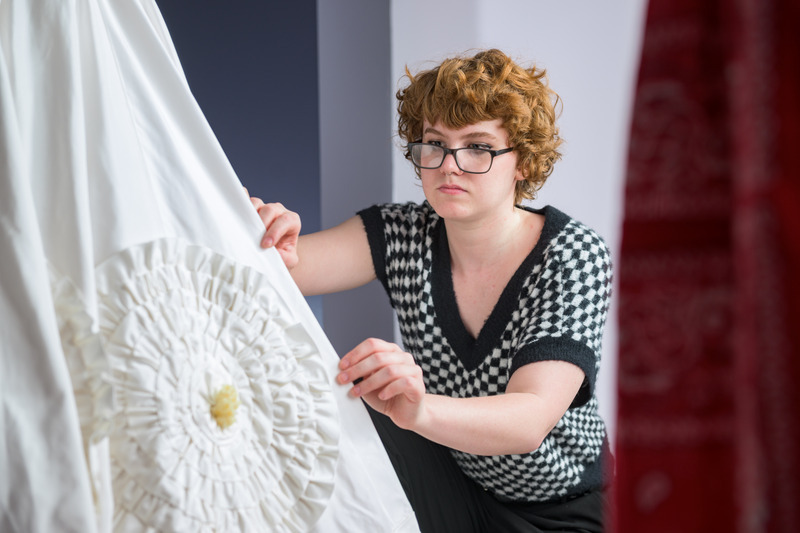
Culley saw the REP production of Yeah, Baby his first year on campus, but he had no idea how UD’s professional theatre company could impact his academic experience.
“I didn’t realize that UD had a minor, or theatre classes, but I started to look into it,” he said.
He also made the most of those foundational years in the fashion department, which led to an amazing experience in fashion history and haute couture — working on a reproduction of Jackie Kennedy’s wedding dress.
Culley took advantage of every opportunity to get experience and develop his skills, adding a minor in functional and wearable design, and earning a certificate in design and creative making. As a junior, he won an award for a dress he submitted to the 2024 Synergy Fashion Group spring show, and the following year his collection for his senior capstone project was selected as UD’s entry to an international scholarship competition.
To make a pair of pants
Culley made the leap from fashion into costume design his senior year, when he became an intern for the REP, working in the costume shop crafting pieces for the production of King Lear.
“We’ve had students come in with literally no sewing skills, but we were so lucky with Alex because he came in with these great skills from having done fashion,” said Joanne Fulmer, costume shop manager.
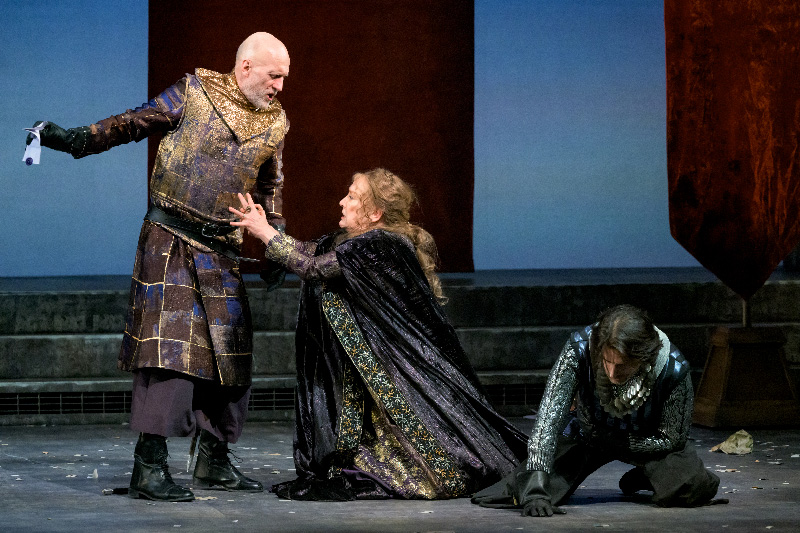
Culley realized early on there are key differences between sewing for a fashion class and sewing a costume.
“In fashion courses, we did all the steps, but in the shop generally one person makes the pattern, one person cuts it out, one person sews,” he said.
He also explained that the order of construction can be different because while fashion is generally one-size-fits-all, a costume is fit to the actor playing the role.
For example, the waistband is often the last piece added to a regular pair of pants, but for a costume the side seam may be the final element sewn, because that allows for a more custom fit.
“I really love patterning,” he said. “It’s the in-between step where you take a drawing and figure out how to make it real. How do I make this happen? It’s time-intensive, but it’s like a really big puzzle, and I love that.”
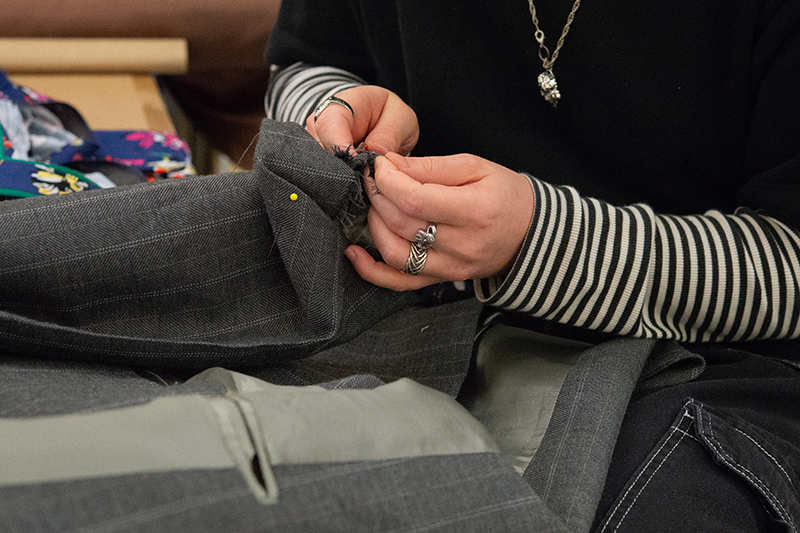
He also worked backstage as a dresser on the wardrobe crew for King Lear, a vastly different experience from the work of constructing costume pieces.
Dressers do more than help with zippers. They are often the first people at the theatre and the last to leave as the job includes taking care of all the costume pieces during the run of a show. Items get repaired and laundered, and sometimes even cleaned between scenes. For King Lear, the team had to remove blood from a costume before the curtain call.
“It’s live theatre, which is really cool, but you have to be on your toes,” Culley said. “You can’t zone out because if something goes wrong you need to react.”
Next steps
Culley is on deck to work in the costume shop through the end of the 2025-2026 season, and with a solid résumé including this professional experience, he is well placed to find work for the 2026-2027 season.
Culley believes that fashion exists to make people feel confident, not so that other people think you look good. The art of costuming takes it further by helping to tell a character’s story.
“I just love taking a fanciful idea and turning it into this physical thing in the world that you can hold and touch and wear,” Culley said.
The REP’s production of And Then There Were None runs Oct. 30-Nov. 16.
Contact Us
Have a UDaily story idea?
Contact us at ocm@udel.edu
Members of the press
Contact us at mediarelations@udel.edu or visit the Media Relations website

